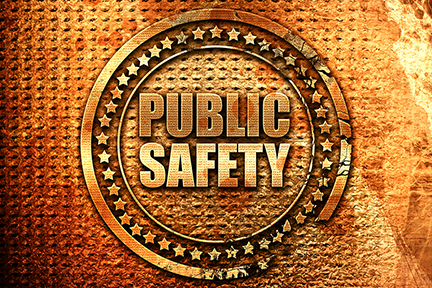
Like many aspects of life in 2020, the structure of law enforcement is undergoing fundamental shifts. Falling revenues have cut deeply into agency budgets and public protests have increased tension and created uncertainty. At the same time, the COVID-19 pandemic has placed additional stress on police and sheriff’s department budgets and resources. What a year! As we are on the threshold of welcoming in 2021, let’s look at the types of changes law enforcement can expect as a result.
What to Expect in 2021
#1 - Community-Led Policing Rebounds
Law enforcement agencies should expect greater scrutiny of their practices in the coming year. Many states and cities have moved to increase police transparency and accountability. This heightened scrutiny will take a variety of forms, such as instituting oversight committees, requiring agencies to collect and report data on police encounters, limiting the use of deadly force, and eliminating qualified immunity. Some communities are actively working to reassign officer responsibilities to social workers, crisis intervention counselors and mental health professionals.
Policies on topics like use-of-force and disciplinary actions will become more publicly available. These new policies will result in changes to how daily law enforcement operations will be carried out, with an emphasis on community-based policing strategies.
Police unions can also expect tougher contract negotiations in many parts of the country. A combination of budget shortfalls and concerns about transparency have already led to the rejection of police union contracts in Spokane and Denver. It is anticipated that there will be more demands for accountability and fewer personal protections for officers who are accused of wrongdoing in future contracts.
#2 - Recruiting and Retention Challenges
With widespread civil unrest and this year’s conflicts between police in major metro communities, an increased number of officers will continue opting for early retirement. In addition, a major reduction in academy graduates nationwide will take its toll in 2021. Agencies will have to generate new recruitment strategies to capture and train a new workforce. This will include comprehensive training in areas of de-escalation, racial bias and mental health intervention. Diversity will be top of mind and will be achieved with proactive and intentional recruiting.
With recruits eventually ushering in generational change, a related change is expected in operational practices as a natural consequence of this year’s calls for reform. Until officer short falls have been filled, agency personnel will be assuming multiple roles and working longer shifts. Estimated overtime requirements for 2021 based on the ability to hire new officers (which may take a long time) will be tough to balance amidst declining tax bases. This leads to the next trend and that’s how technology is anticipated to fill this gap.
#3 - Technology to the Rescue
With fewer officers available in the field, 2021 is expected to be a milestone year for law enforcement technology. Use of mobile technologies, such as body-worn cameras and in-car videos are expected to increase in order to address the concerns for accountability, transparency and safety. Use of drones, also known as UAT’s or ‘Unmanned Aerial Targets’, will enable officers to maintain a higher level of situational awareness when physical intervention puts them at risk or is impossible to achieve. To address public concerns about privacy, rules around the use of these and other public surveillance technologies are also expected to increase.
While CAD, RMS and JMS will continue to be required by law enforcement, agency leaders will increasingly need to rely on analytical methods of accessing operational efficiencies. Use of crime mapping and data-driven approaches are expected to increase as an alternative to fewer resources. With budget constraints, workforce safety and administrative oversight as key concerns, increased use of data-driven analytics will help agencies in areas of crime, traffic and workforce management. This will provide increased ‘actionable’ intelligence for all personnel, no matter if they are boots on the street or in leadership positions.
#4 - COVID's Continuing Impact on Criminal Justice Operations
As the virus continues into 2021, conditions in our nation’s jails and prisons will remain a breeding ground for contagion. Many policies from 2020 are expected to stay in effect to keep infection levels as low as possible for the incarcerated and workforce staff alike. Some jurisdictions will continue to release inmates early who do not pose a community threat or those who have heightened risk of complications like the elderly.
While criminal jury trials are projected to resume in 2021, some trials have recently been conducted safely following new processes to protect health and safety. Use of masks, courtroom reconfiguring and jury deliberation spaces that allow at least six-feet of social distancing are a few of the new procedures expected to carry over into 2021. In addition to the constant cleaning of courtroom furniture and surfaces, other approaches include using plexiglass barriers, vetting prospective jurors at health risk, and reliance on technology to present evidence.
Conclusion
2020 has been a time of dramatic change. As the nation struggles with questions of public safety, justice, and equality, law enforcement operations will continue. How they evolve has yet to be seen. One thing is for sure –this has been an influential year and there's no going back!
Subscribe to Orion's blog for our latest articles about the public safety workforce.


